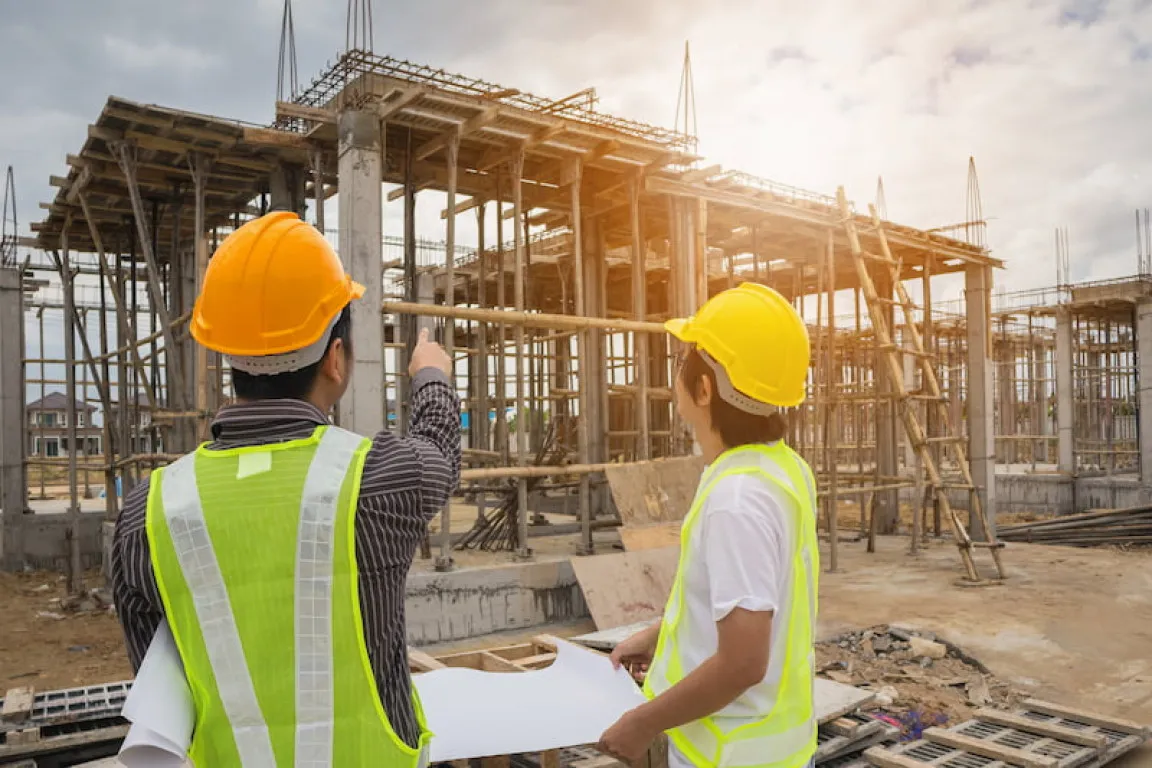Selecting earthquake-resistant building is crucial to ensure the buildings are durable against various shocks. By choosing the right materials, such as reinforced concrete, lightweight steel, or lightweight bricks, you can build a more flexible and durable structure.
In addition, using the right materials can also reduce the risk of building damage and protect its occupants from the dangers of earthquakes. Check out the full explanation below!
Requirements for Earthquake-Resistant Building Structures
There are some requirements for earthquake-resistant buildings in which the building must stay regardless of any kind of shocks without falling apart. Here are some earthquake levels you should consider:
- Mild earthquake: The building should not be damaged.
- Moderate earthquake: Damage may occur only to structural elements, such as walls or plaster.
- Major earthquake: Despite damage to structural and non-structural elements, the building should remain stable and not collapse.
Earthquake-Resistant Building Materials
The selection of the right materials is crucial to make an earthquake-resistant building. In building earthquake-resistant buildings, the materials used must have the strength, flexibility, and durability to withstand various levels of shock. Here are some commonly used earthquake-resistant building materials.
1. Concrete
Concrete is a construction material made of cement, water, sand, and gravel. The process of hardening concrete, also known as hydraulic hardening, can produce strong and durable materials. For concrete to last long in earthquake conditions, it is important to pay attention to the proportion of materials, the amount of water, the size of gravel, and the quality of cement properly.
2. Reinforced Concrete
Reinforced concrete is one of the earthquake-resistant building materials made of concrete and steel. Reinforced concrete functions to make the building stronger. Concrete can withstand compressive loads and steel provides resistance to tensile loads to make the structure more stable and resistant to earthquakes.
Read also: Building Structures: Types, Elements, and Examples
3. Lightweight Steel
The next earthquake-resistant building material is lightweight steel. Lightweight steel is a lightweight and flexible building material. Due to its ability to move following vibrations, lightweight steel is often used in modular construction. Modular homes are quick to build, flexible, economical, and more affordable than conventional homes.
4. Lightweight Brick
Lightweight brick can be earthquake-resistant building materials because of its light weight with higher strength. The use of lightweight brick for walls can lower the risks of damage and increase safety during earthquakes.
5. Foundation Stone
A strong foundation is important for earthquake-resistance building. River rock or mountain rock is often used because both have a hard and solid structure. This structure helps bind the building and maintain its stability when shaking occurs.
6. Laminated Glass
Another earthquake-resistant building material is laminated glass. Laminated glass is a polymer layer that strengthens the glass, making it sturdy during earthquakes. This layer prevents the glass from breaking even under great pressure. Therefore, this material is ideal for glass windows and doors in earthquake-resistant buildings.
7. Earthquake-Resistant Gypsum
Earthquake-resistant gypsum is completed with additional fiber that strengthens the interior wall, preventing it from cracking and being damaged during earthquakes. Not only that, this material is also fire-resistant, increasing the whole building's safety.
8. Composite Bamboo
The last earthquake-resistant building material that can be used is composite bamboo. Composite bamboo is an environmentally friendly material with high tensile strength. Processed with resin or other composite materials, this bamboo is a lightweight, strong, and flexible alternative to wood, making it ideal for the construction of shock-resistant building frames.
Read also: Spun Pile: Definition, Functions, Advantages, & Types
Characteristics of Earthquake-Resistant Buildings
Earthquake-resistant buildings are designed with various characteristics in mind, such as the strength of the foundation, symmetry of the design, and the use of appropriate materials. Each of these characteristics plays a role in reducing the impact of earthquakes and ensuring that the building remains stable even when there is strong ground movement. Below is the complete explanation of each characteristic:
1. Strong and Stable Foundation
The first characteristic of an earthquake-resistant building is having a strong and stable foundation. The foundation is designed to withstand ground movement and support the stability of the structure. Usually, this foundation is made deeper and reinforced to ensure the building remains sturdy even if there is a shift in the surrounding ground.
2. Seismic Damping and Isolation Systems
Seismic damping and base isolation systems increase the building’s earthquake resistance. Seismic damping absorbs earthquake energy, while base isolation allows the building to float on its foundation, reducing shocks transmitted to the main structure.
3. Symmetric and Well-Distributed Design
Buildings that are imbalanced or asymmetrical are more vulnerable to earthquake damage. Therefore, having a symmetrical design is one of the traits of an earthquake-resistant building because even weight distribution and symmetrical design help lessen uneven pressure during an earthquake.
4. Using Strong and Flexible Material
Because of their strength and flexibility, materials like steel and reinforced concrete are utilized to build structures that can withstand earthquakes. These materials are good at enduring lateral loads during earthquakes in addition to vertical loads.
5. Structure Flexibility
Structures built to withstand earthquakes are flexible enough to sustain ground movement without suffering significant damage. The building structure is less likely to break or sustain damage as a result of this flexibility's ability to absorb seismic energy.
That covers everything you need to know about earthquake-resistant building materials. To ensure that the building structure is not only safe but also flexible and long-lasting, it is crucial to use the appropriate materials, such as lightweight steel, reinforced concrete, and lightweight bricks.
For best outcomes, you must choose high-quality materials to lower the chance of damage and improve building safety. Semen Merah Putih offers creative ready-to-use concrete through its subsidiary, Merah Putih Beton, for a range of construction applications requiring durability and strength.
Their top-selling goods, which are designed for a range of construction applications, include Ready-Mix Concrete, Precast Concrete, and Aggregate. Merah Putih Beton's Ready-Mix Concrete is made with a variety of properties for a range of construction projects, including houses, highways, high-rise structures, and other infrastructure projects.
So, what are you waiting for? Choose Semen Merah Putih to ensure your building’s strength and durability. Contact us for more information about Semen Merah Putih products and find the best solution for your construction projects!
Read also: Types of Deep and Shallow Foundations for Buildings



